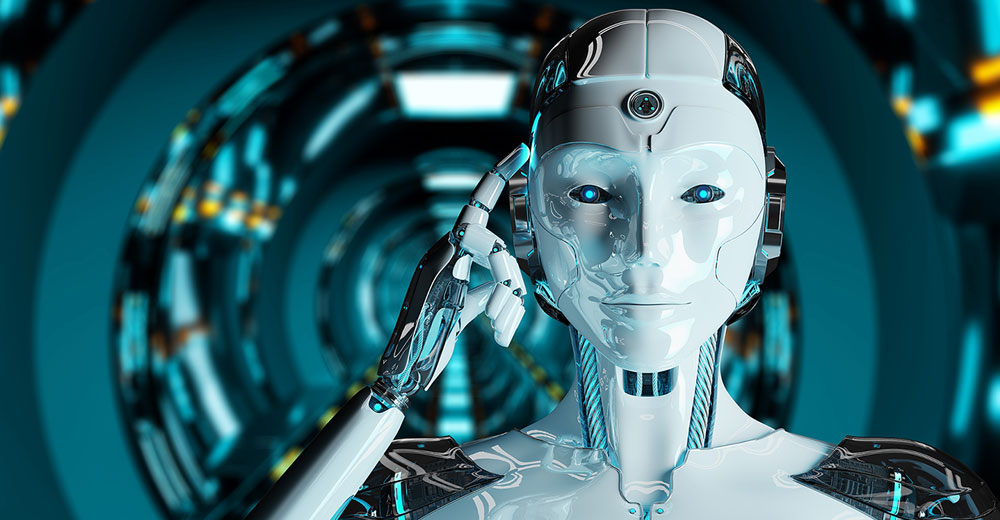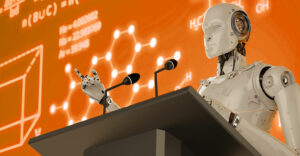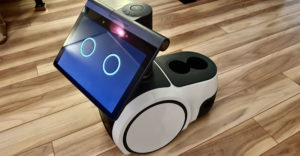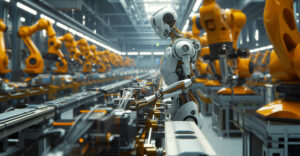A collateral beneficiary of the feverish pace of generative artificial intelligence development appears to be the humanoid robot.
A Norwegian company called 1X Technologies, formerly Halodi Robotics, which describes itself as a manufacturer and inventor of androids, recently attracted $23.5 million in a round of funding led by the OpenAI Startup Fund — the same OpenAI that got the AI snowball rolling with its ChatGPT generative AI bot.
“1X is at the forefront of augmenting labor through the use of safe, advanced technologies in robotics,” Brad Lightcap, OpenAI’s COO and manager of the OpenAI Startup Fund, said in a statement. “The OpenAI Startup Fund believes in the approach and impact that 1X can have on the future of work.”
With the funds, 1X said it intends to accelerate the development of its bipedal android model NEO and expand manufacturing of its first commercially available wheel-based android, EVE, in Norway and North America.
Among EVE’s potential uses is providing companionship for older adults, assisting them with tasks in the home, and possibly providing medical care.
The Norwegian company is among a handful of firms working on packaging AI into a human form along the lines of Star Wars 3-CPO. They include Boston Dynamics, Hanson Robotics and Engineering Arts, Tesla, and Figure.
Figure’s mission is ambitious: to develop general-purpose humanoids that make a positive impact on humanity and create a better life for future generations. These robots can eliminate the need for unsafe and undesirable jobs — ultimately allowing us to live happier, more purposeful lives.
Welcome to Westworld
Until now, humanoid robots seemed more likely to be found in science fiction than in society; the recent surge in AI development has altered that perception.
“Generative AI has certainly been a significant enabling element for the development of humanoid robots,” observed Mark N. Vena, president and principal analyst with SmartTech Research.
“For humanoid robots to be perceived as a ‘human,’ generative AI utilities can provide lifelike, real-time conversational capability in different contexts,” he told TechNewsWorld.

1X is partnering with OpenAI to create its upcoming bipedal android model NEO. (Image Credit: 1X)
Technology appears to have reached a pivotal point in the development of humanoid robots. “The software and hardware have advanced to the point that human-seeming robots will be able to have more natural interactions with people in ways that weren’t possible before,” maintained Greg Sterling, co-founder of Near Media, a news, commentary, and analysis website.
“This is a version of Westworld coming into being,” he told TechNewsWorld.
Generative AI software, along with other technologies, could be used to enhance a humanoid robot’s performance, added J. Gerry Purdy, principal analyst at Mobilocity, a mobile advisory firm in Boca Raton, Fla.
“Researchers might install ChatGPT in the Robot’s computer system along with voice recognition and voice generation so that it would appear that the Humanoid Robot was quite smart,” he told TechNewsWorld.
Ethical Issues
Before humanoid robots gain public acceptance, they’ll have to surmount some challenges that generative AI bots are facing now. “Biased, inaccurate responses are real risks,” Vena said.
“A human interacting with the robot in real-time may be unable to discern what responses are truly fact-based or the outcome of some biased algorithm,” he added.
Other challenges may stem from the roles the robots find themselves in. “They will be engineered to perform specific roles or tasks,” Sterling explained. “The challenges will be domain or task-specific, but I suspect most can be overcome.”
Purdy added that understanding and acting on spoken commands could also be challenging to an android. “The humanoid brain has to be able to make a list of tasks and then have I/O that can understand and carry them out,” he said.
“ChatGPT is not so much about actions as it is about dialogue about the world.” Once humanoid robots begin entering the general population, ethical issues are bound to arise, too. All the ethical issues associated with AI and GPT are applicable to humanoid robots, Sterling maintained.
“Some people might also be confused by them,” he said. “Some could become emotionally attached in caregiver or companion situations.”
“Yet the bigger issue is: how much do we want to deploy robots in what were previously human roles in our society?” he asked.
Where’s the Work?
The biggest problem with generative AI — and indeed humanoid robots with generative AI implementations — is that the robots will be so lifelike from an appearance standpoint, and the dialogue will be so human-like that it will be incredibly difficult to discern a robot from a human, asserted Vena.
“We already have problems with non-robotic implementations where companies are not disclosing the use of these tools on their websites or the output they produce,” he said.
“At the very least,” he continued, “there needs to be regulations and requirements put in place that clearly disclose that humanoid robotics, regardless of how lifelike they are, are using generative AI technology so that people know they are not interacting with a human.”
A long-term ethical issue facing society as humanoid robots enter the mainstream will be job displacement. A recent report by Goldman Sachs estimated that generative AI could impact as many as 300 million jobs worldwide.
“What are people going to do for work?” Purdy asked.
“My life as an industry analyst isn’t going to be replaced, but a lot of other classes of work may be,” he continued. “We may have to consider some kind of uniform basic income so that people in society focus on enjoyment, visiting and talking and having great trips together to see the world.”
Customer Service Jobs at Risk
Figure, though, argues that AI and robots will be needed in the coming years to meet increasing labor shortages.
“Today, we are seeing unprecedented labor shortages,” it wrote on its website. “There are over 10 million unsafe or undesirable jobs in the U.S. alone, and an aging population will only make it increasingly difficult for companies to scale their workforces.”
“As a result,” it continued, “the labor supply growth is set to flatline this century. If we want continued growth, we need more productivity — and this means more automation.”
The humanoid robot from Figure, called Figure 01, merges the dexterity of the human form and cutting-edge AI to lend support to industries including manufacturing, logistics, warehousing, and retail.
How soon can we expect to see humanoid robots among us?
“We are getting very close to the point when humanoid robots will start appearing in customer service job scenarios,” Vena said. “Fast food restaurant workers could be replaced by these types of robots.”
“Those types of jobs are at a high risk, as companies will perceive this as a genuine tool to mitigate costs,” he noted. “Potentially security at buildings and even private homes could be places where we see these robots start to appear, too.”

























































